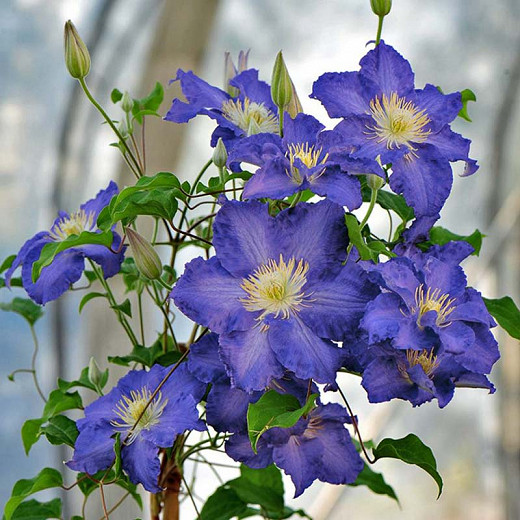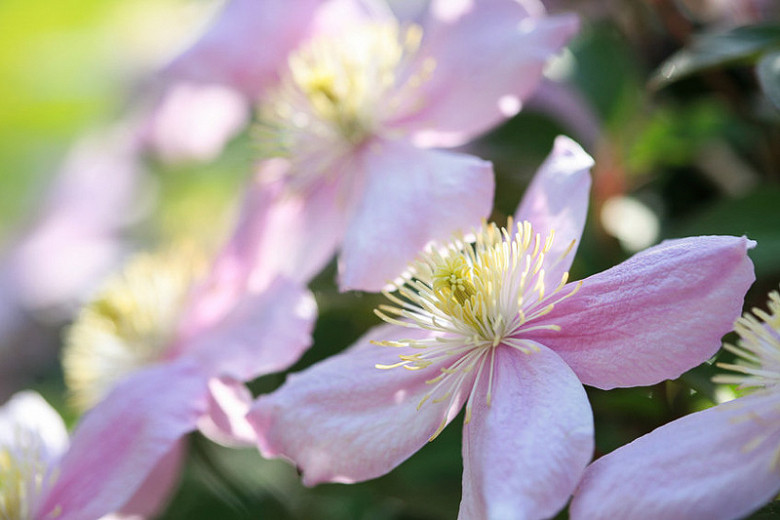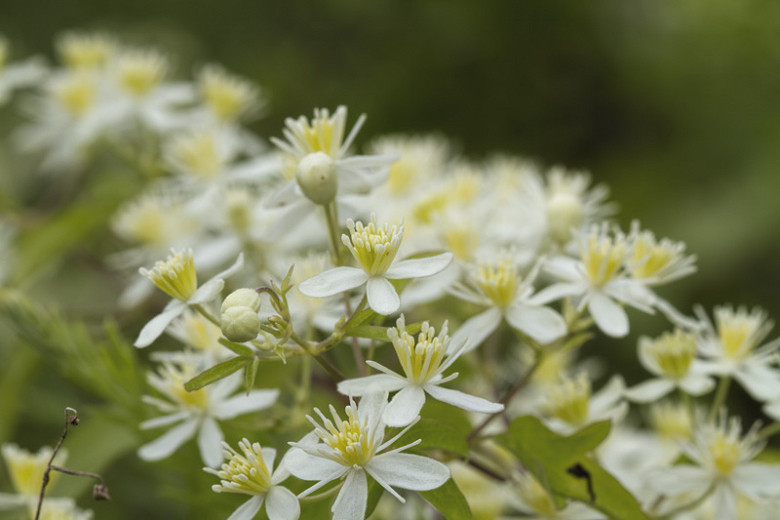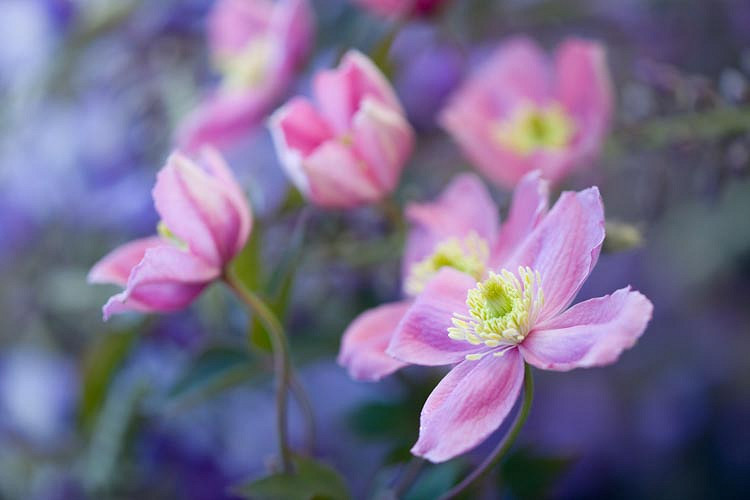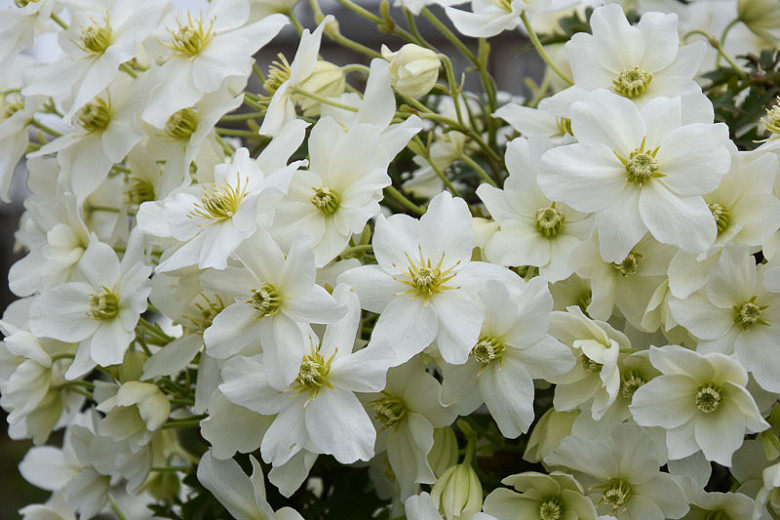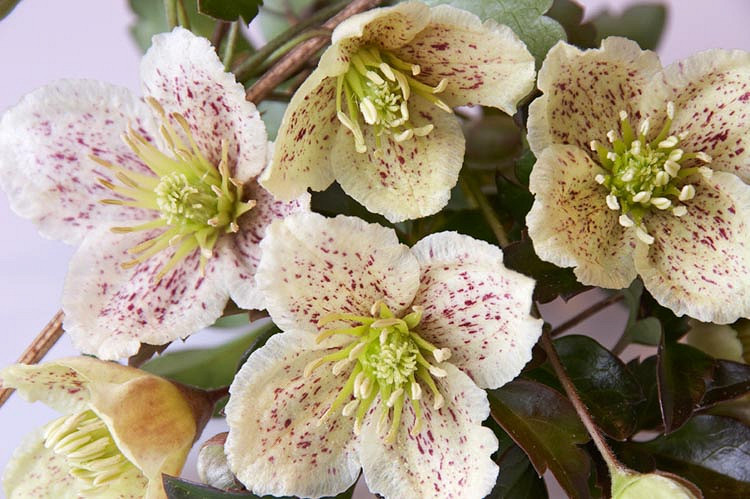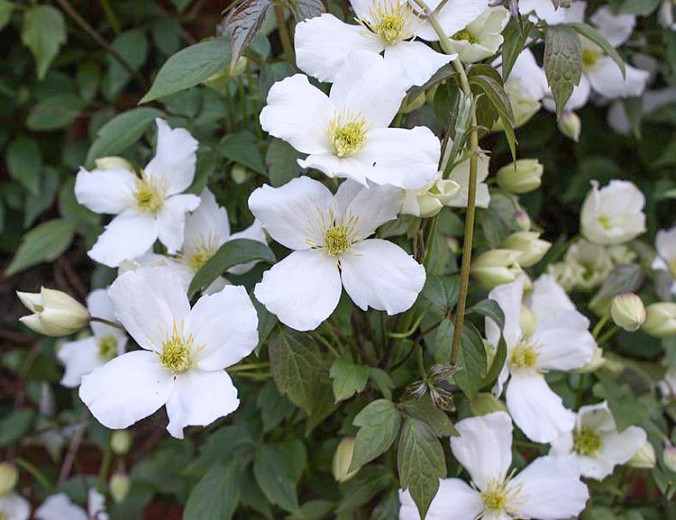Clematis lasiantha (Chaparral Clematis)
Clematis lasiantha (Chaparral Clematis) is a robust, woody, deciduous climber with showy clusters of creamy-white flowers, 1 in. wide (2.5 cm), from early spring to early summer (depending on geographic location). The blossoms are so profuse that they almost cover the foliage of pinnately compound leaves adorned with 3-5 leaflets. Even after flowering is over, this vine remains attractive, thanks to the silky plume-like seedheads left by the passing female flowers, therefore providing winter interest. It is deciduous and may die back completely in cold winters, but will reemerge in the spring. Widely adaptable, tough, drought tolerant and disease-resistant, Chaparral Clematis can be trained on a trellis or allowed to climb a tree. It is also a good choice for native plant garden or a shaded, rocky, well draining slope. Growing in the Coast Ranges and Sierra foothills of California south into Baja California, Chaparral Clematis occurs naturally in woods and shrubby areas in canyons and near streams.
- Grows up to 8-20 ft. long (2-6 m).
- Thrives in well-drained soils of decomposed granite, sand, or clay loam, in full sun to part shade. Ideally, Clematis prefer having their 'heads in the sun and their feet in the shade'. Will tolerate full shade, but may grow more slowly. In very dry, hot areas, provide afternoon shade and mulch to keep the roots cool. It tolerates summer water up to 1x per month, but should not need it if properly sited. Drought tolerant once established.
- This Clematis belongs to the third group of Clematis – a group including Clematis which flower in late summer on growth made in that season. They should be pruned in late winter or early spring and require 'hard pruning': simply cut back the stems to a pair of strong buds about 1ft. (30 cm) above ground level before growth begins in early spring. Cut back immediately after bloom where self-sown seedlings are a problem.
- No serious pest or disease issues. Deer resistant.
- Propagation by seed, softwood or hardwood cuttings.
- All parts of this plant are poisonous. Severe pain in mouth if eaten, skin irritation if touched or inhaled.
- Toxic to dogs, toxic to cats, toxic to horses.
- Native to California.
Requirements
| Hardiness | 8 – 10 |
|---|---|
| Climate Zones | 7, 8, 9, 14, 15, 16, 17, 18, 19, 20, 21, 22, 23, 24 |
| Plant Type | Climbers |
| Plant Family | Clematis |
| Exposure | Full Sun, Partial Sun, Shade |
| Season of Interest | Spring (Early,Mid,Late)Summer (Early) |
| Height | 8' – 20' (240cm – 6m) |
| Spread | 2' – 3' (60cm – 90cm) |
| Spacing | 24″ – 36″ (60cm – 90cm) |
| Water Needs | Low |
| Maintenance | Low |
| Soil Type | Clay, Loam, Sand |
| Soil pH | Neutral |
| Soil Drainage | Well-Drained |
| Characteristics | Showy |
| Native Plants | United States, California |
| Tolerance | Clay Soil, Deer, Drought |
| Attracts | Butterflies |
| Garden Uses | Arbors, Pergolas, Trellises, Banks and Slopes, Walls and Fences |
| Garden Styles | Informal and Cottage, Prairie and Meadow |

